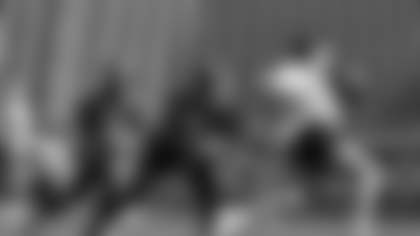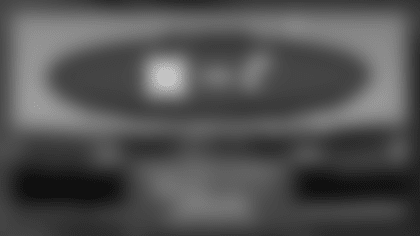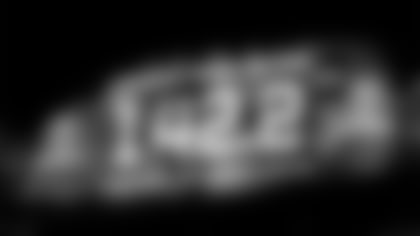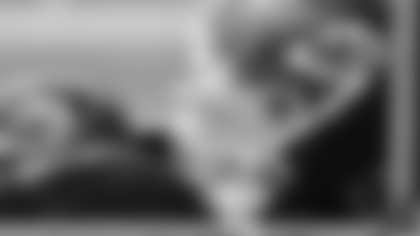This is another in a series of season-long columns on the Kansas City Chiefs search for a franchise quarterback. It will appear weekly on Thursdays throughout the 2015 season.
PAST CHAPTERS
Introduction: The Quest for a "Franchise Quarterback"
Chapter One: Len Dawson was KC's First "Developed" Quarterback
Chapter Two: Pete Beathard is an Early Prize
Chapter Three: Is Mike Livingston a Franchise QB?
By 1979 the Chiefs were talking publicly about the need for a "quarterback of the future", or the team's front office was. Marv Levy, the head coach, believed the team had more pressing needs.
Lamar Hunt was deeply disturbed about the team's play at quarterback. But going into the 1979 draft, the Chiefs priority, according to Levy anyway, was defense and the team's scouting department had identified Tom Cousineau, the Ohio State linebacker, and Mike Bell, a nose tackle out of Colorado State, as the two stars of the draft.
Hunt, never a meddler, had reconciled himself that Bell was the right pick, but he continued to be openly concerned about the franchise's play at quarterback and he had allies in team president Jack Steadman and GM Jim Schaaf. Steadman had met with Schaaf and Levy at the conclusion of the previous season and told them that "as an organization the most crucial problem we had to solve before we went to [training camp] was to find our quarterback of the future." Steadman wanted to start developing a young quarterback now while Livingston still had something left.

GM Jim Schaaf and Coach Marv Levy had conflicting opinions on who to draft in 1979
But more than that, they were aware of the growing anger in a fan base that was unabashed in showing its displeasure with Livingston.
"I'll buy a season ticket when you get a good quarterback," wrote one fan to the organization. Another fumed the team was "dead, dead, dead until we get a quarterback."
Writing to the *Kansas City Times, *one season ticket holder was convinced that Mike Livingston "just cannot produce a winning team." Livingston had engineered straight victories in 1969 when Len Dawson was injured, but since becoming a full-time starter the Chiefs had gone 5-9, 2-12 and 4-12.

Fans cited their displeasure with Livingston as QB by 1979
The Chiefs had their marching orders, as far as the fans were concerned, but a battle was soon to ensue between coach and management as the 1979 draft loomed.
Frankly, the idea of taking quarterbacks in the draft had never been much of a high priority for the franchise. Roger Staubach was taken in a Futures Draft and was a 16th round selection. Don Meredith was taken in the days of the AFL draft when players were not chosen in numerical order. Don Klosterman, the team's personnel head at the time, had picked Pete Beathard in the first round. Livingston was the only quarterback taken in the second round, up to that point. He was taken in 1968. After that, the highest choice spent on a quarterback was the third round used to take David Jaynes of Kansas.
By 1979, the franchise was in the fifth year of a rebuilding program that was started following the dismissal of head coach Hank Stram, but had little to show for it. By contrast, the Pittsburgh Steelers had had a remarkable run of success rebuilding their team. In one five-year period their first-round choices were Joe Greene, Terry Bradshaw, Frank Lewis, Franco Harris and Lynn Swann.
In the 1971 draft they hit it big with Jack Ham taken in the second round, Dwight White in the fourth, Larry Brown in the fifth, Ernie Holmes in the eighth and Mike Wagner in the 11th.
When the Chiefs' new head of player personnel, Les Miller, came on board he identified three quality quarterbacks in the 1979 draft to include Jack Thompson of Washington State, Phil Simms of Morehead State and Steve Fuller of Clemson. Also in the mix, but not thought to be of the same quality were Chuck Fusina of Penn State and Joe Montana of Notre Dame, who one scouting report said, "ran hot-and-cold" and "must develop some consistency [but] is a leader."
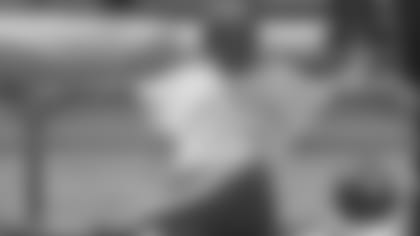
Les Miller identified 3 quality QB's in the 1979 draft
Only Thompson and Fuller were thought to be possible starters right now.
For the fans, Thompson was their choice; for head coach Marv Levy, he was looking defense all the way. A *Kansas City Star *poll released May 2 had "The Throwin' Samoan" well on top of team needs, and the Chiefs hierarchy, outside of Levy, was quick to agree.
The fan base was anxious to take a quarterback in any round as long as it was in one of the early ones. Remembering Dawson and what he had meant to the Chiefs in their march to two Super Bowls, one asked, "When was the last time a team got to the Super Bowl without a top quality QB? What are the odds of getting a top quality QB in anything but the first or second round." Still another implored to "draft 20 of them and we may get one who can play."
Levy remained unmoved by the public's outcries. "The clubs that win in this league are, above all, solid defensively," he said repeatedly in the months leading up to the draft. He had followed that formula since taking the job with nine of Kansas City's 11 defensive starters drafted before 1979.

Levy was adamant that defense had to improve first
"I'm not interested in balance," he continued. "I'm interested in a great tough, overwhelming defense," he said emphatically. In 1977, the Chiefs had set an NFL record for the most rushing yards yielded. They improved from 28th to 20th in 1979 because they had addressed the need for defense with their first three picks in the draft.
The lines were drawn and all parties had made their thoughts known. It was only left to draft day 1979 to see what direction the team would go.



